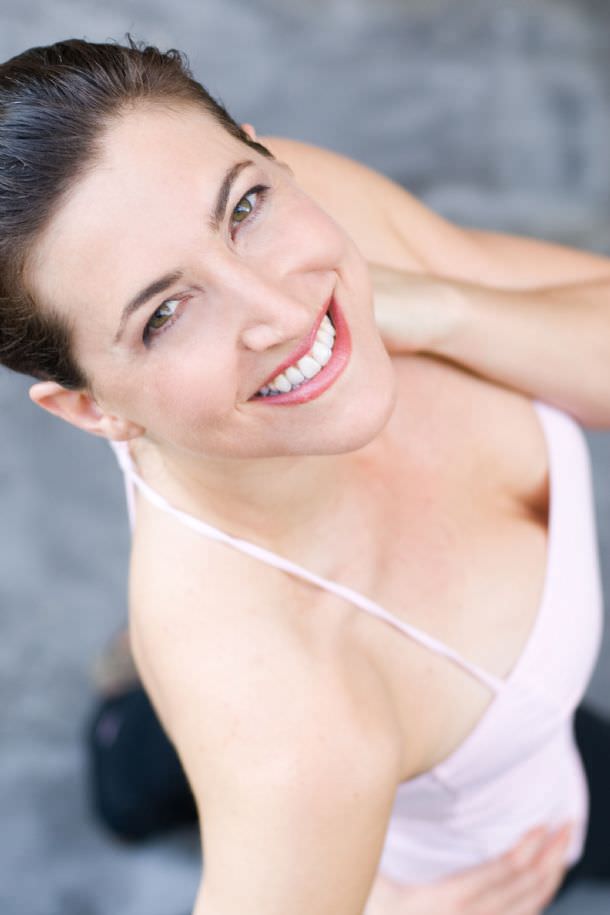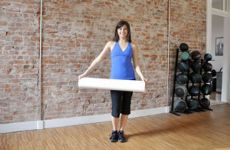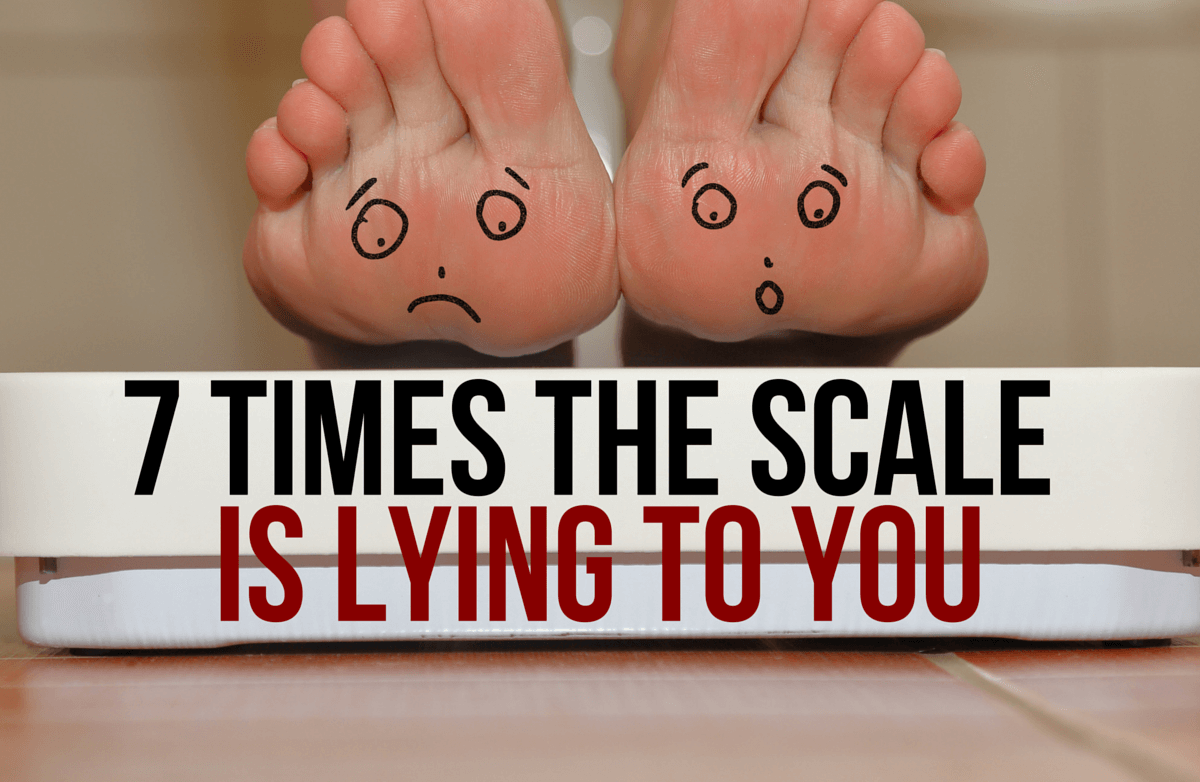|
I have always thought of the combination of Pilates and yoga as the perfect marriage. Both are transformational, focused methods of movement that facilitate positive change in the body, mind and spirit. In my opinion, their differences complement one another in the best of ways. Pilates is known as a "workout," and yoga as a "practice"; however, the irony here is that, in order to improve at anything, we have to practice, and when we practice well both Pilates and yoga are can be exceptional workouts. And as you will see, both are worthy of your time and attention for innumerable reasons. Unless you're very familiar with both—or a trained instructor—it may be difficult to tell how these two programs are different. In truth, there is a lot of overlap and similarities between yoga and Pilates. And what better way to understand them both than with a little history lesson on each. Pilates Born near Dusseldorf, Germany, in 1880, Joseph H. Pilates had his challenges as a child, suffering from asthma, rickets and rheumatic fever. His determination to heal led to his study of Eastern and Western forms of exercise, including yoga and ancient Greek and Roman exercise regimens. By the time he was 14, Pilates had quickly become a veritable renaissance man of exercise. Accomplished as a wrestler, diver, skier and a gymnast, he was even asked to pose as a model for anatomical charts. When World War I broke out, he was interned for a year in England, and while in the camp, he taught his fellow internees the physical fitness program he had developed, boasting that they would emerge stronger than they were before imprisonment. Those who followed his program are said to have resisted the influenza epidemic that killed thousands. Always curious and compassionate, after encountering soldiers who were disabled as a result of wartime injuries, he began devising machines using the springs from old hospital beds to facilitate their rehabilitation. These machines were the very prototypes of the specialized equipment that is used in Pilates studios today, which utilize pulleys and springs as resistance to build strength and increase overall flexibility in the spine and limbs. These Pilates apparatus, which includes the Reformer, Cadillac (or Trapeze Table), Wunda Chair, and barrels, are still used today to create a body that is uniformly sculpted, powerful and bio-mechanically efficient. Pilates fittingly called his method "Contrology," (the study of control) and believed that it would help people to develop the strength and fortitude in body and mind, not only to accomplish daily mundane tasks with ease, but to live life to the fullest. "Contrology is complete coordination of body, mind, and spirit. Through Contrology you first purposefully acquire complete control of your own body and then through proper repetition of exercises you progressively acquire that natural rhythm and coordination associated with all your subconscious activities. It develops the body uniformly, corrects wrong postures, restores physical vitality, invigorates the mind, and elevates the spirit." – Joseph Pilates Often called a "moving meditation," because of the incredible focus of mind on the body, Pilates is a non-impact exercise system that emphasizes alignment and body awareness. Done regularly, Pilates exercises can change people's bodies, helping them sculpt muscles and improving flexibility. It helps practitioners develop unmatched core strength, and optimal posture. It helps to improve breathing and increases efficiency of movement. Pilates exercises focus on the "powerhouse," or the stabilizing muscles of the torso, which support the spine. True for exercises performed both on the mat and the apparatus, every movement one does in a Pilates workout emanates from the core, keeping practitioners "honest," by gently forcing them to use both sides of the body symmetrically. In order to successfully initiate and achieve a movement, both sides have to participate equally, giving the dominant, overused muscles a break, and demanding that the "weaker" underutilized muscles have an opportunity to participate, hence, literally balancing the body. Pilates is based on six principles which enable you to learn to move with maximum efficiency while minimizing stress on the body:
The medical community also recognizes Pilates as a modality that assists with physical therapy. Pilates work is often incorporated into conventional therapy to facilitate healing and protect clients from future injury. It's so beneficial, in fact, that many people continue with a Pilates regime long after they have healed from their injuries. Pilates also offers tremendous benefit and relief for people who suffer from chronic conditions, such as arthritis and asthma. Because every exercise involves deep, diaphragmatic breathing, Pilates aids specifically in opening the lungs, helping shallow breathers learn how to breathe properly and build respiratory stamina. Pilates enhances circulatory function and builds the muscles that surround the joints, providing a new support, and simultaneously lubricating the joints, helping to reduce inflammation, which leads to arthritis. Finally, through the development of a stronger core, and emphasis of neutral spinal alignment, Pilates helps people to correct postural imbalances, prevent and heal chronic back pain, and improve overall spine health. "In 10 sessions you will feel the difference, in 20 sessions you will see the difference, and in 30 you will have a new body." – Joseph Pilates Yoga Yoga means "to yoke," or "to conjoin." This holistic practice is deeply rooted in ancient Indian culture that unites the mind, body and spirit through movement, breathing techniques and meditation. Yoga's exact origin and history is uncertain; however, we do know that it is thousands of years old, the earliest signs of yoga postures having appeared as drawings on artifacts dating back to 3000 B.C. Yoga was introduced in the West during the early 19th century where it began as a movement for health and vegetarianism, and by the 1960s, there was an influx of Indian teachers who expounded on yoga and are responsible for the myriad styles we have available to us today. The yogi Swami Sivananda, a doctor in Malaysia, is best known for codifying the "Five Principles of Yoga" which are now taught in yoga classes all over the world and facilitate strength, balance, flexibility, anti-aging and the curing of illness and disease. These five principles include:
On the physical level, yoga postures, called asanas, are designed to tone, strengthen, and align the body, increase flexibility, and promote blood flow to all the organs, glands, and tissues, keeping all the body's systems healthy and balanced. Sun salutations, warrior poses, standing balances, seated forward bends, twists, backbends, inversions and savasana are all standard poses that you will see in just about any yoga class, regardless of the style. Nearly every class generally follows a progression from standing to seated poses. While yoga is practiced by many with goals of spiritual union and improved health, make no mistake: It is quite a workout, too. Every muscle gets stretched, strengthened and challenged is a yoga class. The yoga philosophy believes the breath to be the most important facet of health, because it is the largest source of prana, or life force, we have available to us, and when we learn to harness it, anything is possible. Hatha yoga, the primary influence in modern yoga, utilizes pranayama, which literally means "the science or control of breathing" to help the practitioner quiet the mind, embrace the present moment and manifest good health. Achieving proper alignment in each yoga posture, and moving into greater ranges of motion while staying connected to one's breath, challenges your comfort level and leads to transformation from the inside out; practitioners of yoga often see improvements in patience, physical strength, balance, flexibility, stress, energy levels and more. "Yoga is not a religion. It is a science, science of well-being, science of youthfulness, science of integrating body, mind and soul." – Amit Ray Pilates vs. Yoga: Similarities & Differences Many of the exercises you'll see in a Pilates workout are inspired by yoga, and the postures in yoga are incredibly similar to the shapes and positions used in Pilates exercises. At the same time, there are exercises that are completely unique to Pilates as well as those that are specific to yoga class alone. A major difference is that in yoga, one generally holds each pose for a longer period of time, while in Pilates, you move at a slightly faster pace. Rather than holding a pose longer the way you would in a typical yoga class, staying in one position and cajoling the body into stretching more deeply through the breath, in Pilates, the practitioner dynamically extends as far as possible within a limited amount of time using resistance, core awareness and breath. Here are some additional similarities between yoga and Pilates.
What's the best way to really learn how they're different? Try them for yourself and experience them live! As I've said, together, they are the perfect combination.  About the Author About the AuthorAn integrated wellness, fitness and lifestyle expert, Jennifer Kries is an internationally renowned mind-body-spirit innovator. The first to bring Pilates, and "The Method," the groundbreaking synthesis of Pilates, yoga and dance to a mass audience, her award-winning videos, DVDs, and TV show revolutionized the fitness community and started the explosive wave of enthusiasm for Pilates and mind-body exercise. She is the creator and producer of several original DVD Series, including her all-new Waking Energy Teacher Training, The Hot Body Cool Mind DVD Series, and The Pilates Method Master Trainer Series. Jennifer has inspired countless readers, practitioners, instructors, and viewers alike to embrace her all-encompassing philosophy of movement, art, health, life and energy. Her attention to detail, superb teaching style, artistry, and knowledge of Eastern healing techniques makes her one of the most sought after mind-body teachers in the world today. Learn more at www.JenniferKries.com. |
More From SparkPeople |


















.jpg)

.jpg)